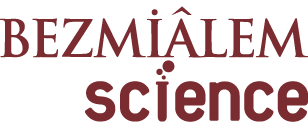ÖZET
Amaç:
Bu çalışmada; sigara içenlerde huzursuz bacaklar sendromu (HBS) görülme sıklığının belirlenmesi ve bağımlılık derecesi ile ilişkisinin araştırılması amaçlandı.
Yöntemler:
Bu prospektif çalışma, tanımlayıcı ve tek merkezli bir çalışma olarak tasarlandı. Çalışma etik kurul onayı alındıktan sonra; 01/03/2017 ile 01/07/2017 tarihleri arasında herhangi bir nedenle üçüncü basamak bir hastaneye başvuran sigara içicileri ile yapıldı. Tüm olgulara Uluslararası Huzursuz Bacaklar Sendromu Çalışma Grubu (IRLSSG) tarafından geliştirilen huzursuz bacaklar tanı formu uygulandı. Beş kriterin tamamına sahip olanlara HBS tanısı konuldu. Katılımcıların nikotin bağımlıklarını değerlendirmek için Fagerström Nikotin Bağımlılık Testi (FNBT) uygulandı. Anlamlılık p<0,05 düzeyinde kabul edildi.
Bulgular:
Çalışmaya dahil edilen 3011 kişinin çoğu erkek (%52,3; n=1,579) idi. FNBT’ye göre katılımcıların %68,4’ü (n=2,059) orta ve yüksek derecede bağımlı idi. Toplamda tüm katılımcıların %9,8’inde (n=296) HBS saptandı. Düşük derecede bağımlılığı olan grupta HBS varlığı %6,9 (n=66) iken orta-yüksek derecede bağımlılığı olan grupta %11,2 (n=230) bulundu ve aradaki bu farklılık istatistiksel olarak anlamlı bulundu (p=0,02).
Sonuç:
Bu çalışmada, sigara içenlerde HBS görülme oranı genel popülasyona göre yüksek bulunmuş olup bağımlılık düzeyi arttıkça HBS görülme sıklığının arttığı saptandı.



